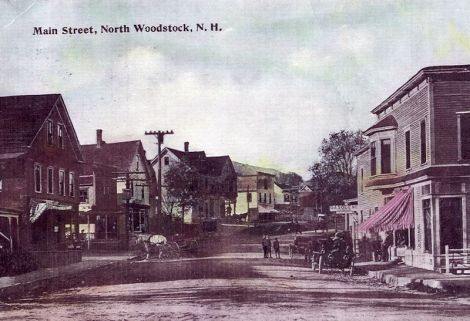About Woodstock

First granted in 1763, Royal Governor Benning Wentworth named the town Peeling, after an English town. Many of the first colonists were originally from Lebanon, Connecticut. In 1771, Benning Wentworth's nephew, Governor John Wentworth, gave it the name of Fairfield, after Fairfield Connecticut. The town was renamed Woodstock in 1840 for Blenheim Palace in Woodstock, England.
Logging in the area, on a large scale, began about 1840, when an experienced lumberman from Maine, Nicholas Norcross began cutting operations on 100,000 acres he had purchased in the Lincoln/Woodstock area. Large scale logging continued in the Woodstock area until the White Mountain National Forest began purchasing large tracts of land as had been authorized by the Weeks Act of 1911.
Woodstock's other major industry, tourism, also flourished. By 1905, more than 2,500 tourists arrived each by rail every summer. Today, Woodstock still stands as a popular destination for in- and out-of-state tourists looking to experience the beauty and wonder of the White Mountains.
Raymond S Burton


